Learn how to reverse sear a steak that’s tender and juicy in the center with a crisp, golden brown crust and irresistible, rich, savory flavor. I’ll walk you through the two-step process, providing all my top tips to help you achieve a restaurant-quality steak at home.
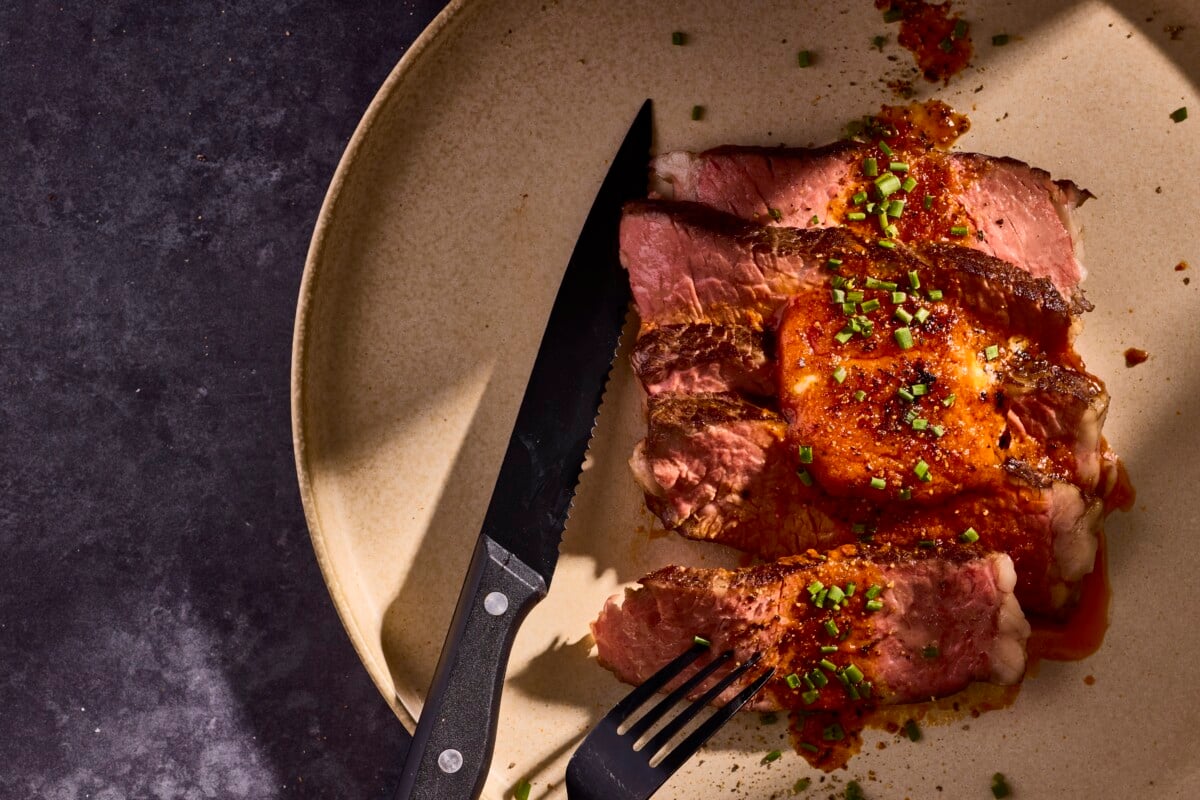
Believe it or not, cooking steak at home doesn’t have to be intimidating. It’s actually one of my favorite meals to make, and it doesn’t require any complicated steps or fancy kitchen tools.
The key is to use a good cut of meat and the proper technique. I promise a great steak isn’t out of reach. You’ve got this, and I’ll guide you through the process.
Reverse Searing vs. Regular Searing
This method is widely regarded by chefs and steak enthusiasts as one of the best tThis method is widely regarded by chefs and steak enthusiasts as one of the best techniques for cooking a steak, particularly for larger, thick steaks like ribeye or tomahawk.
- Reverse searing requires first cooking the steak at a lower temperature in the oven before finishing it off by searing it quickly in a pan on the stovetop.
- Regular searing involves searing a steak over high heat and then finishing it in the oven or a low-temperature grill.
Reverse searing allows for more precise temperature control and a consistent doneness when compared to regular searing. As a result, it’s my preferred method for cooking large steaks.
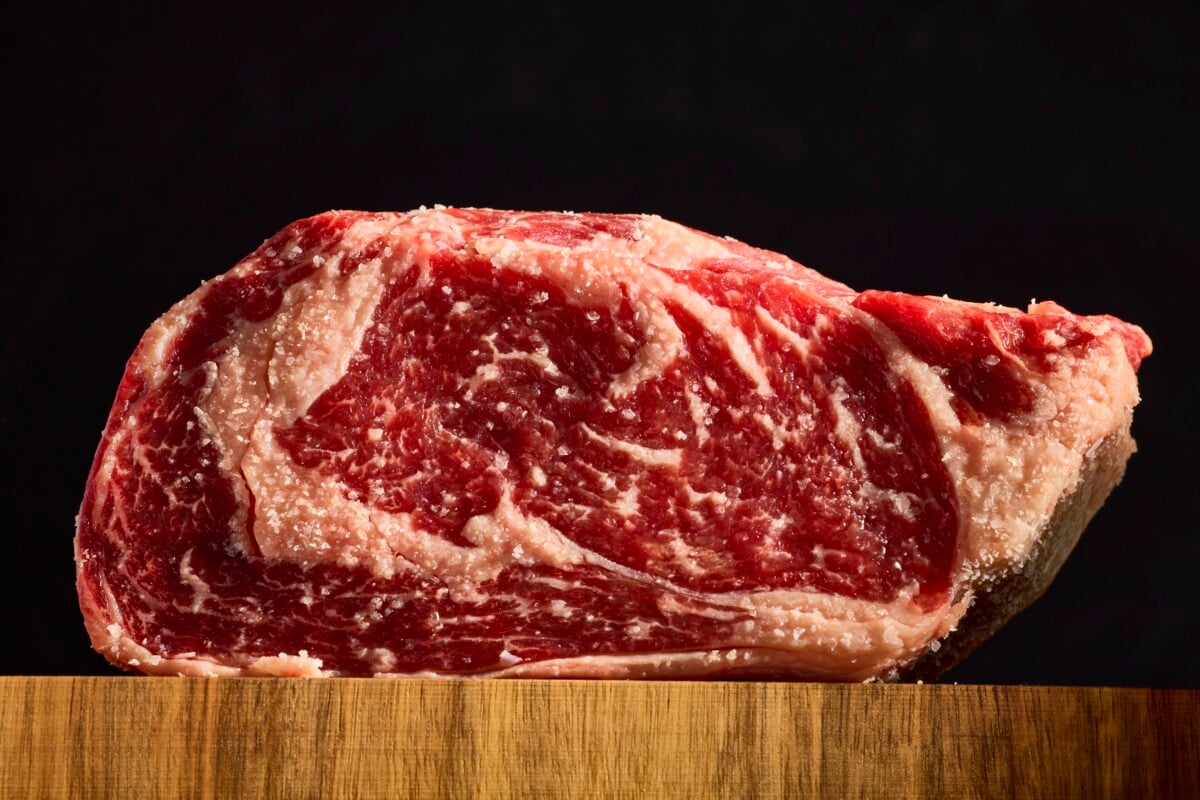
Ingredients and Notes
See the recipe card below for the complete ingredients list and instructions.
- Neutral Oil – Choose a neutral oil with a high smoke point so that it doesn’t burn or impact the flavor of the steak. Avocado oil, grapeseed oil, and canola oil are all great options.
- Salted Butter – This is a key ingredient, adding flavor and preventing the steak from drying out.
- Steak – Use a larger, thicker cut of steak, such as a ribeye or tomahawk. Whichever cut you use, make sure your steak is at least two inches thick to prevent it from drying out.
- Salt – Season the steak all over to help it tenderize and create a nice crust. Then, add more salt to taste.
- Garlic – Use a whole head of garlic, and slice it in half horizontally to infuse the steak with flavor.
- Fresh Herbs – Rosemary, sage, and thyme infuse the meat with a vibrant flavor that enhances the garlic and creates that steakhouse-inspired taste we’re looking to achieve.
How to Reverse Sear a Steak
Unlike the butter basting method, reverse searing cooks the steak from the inside first and then finishes by adding a nice seared crust. This prevents overcooking the edges while keeping the center tender and juicy.
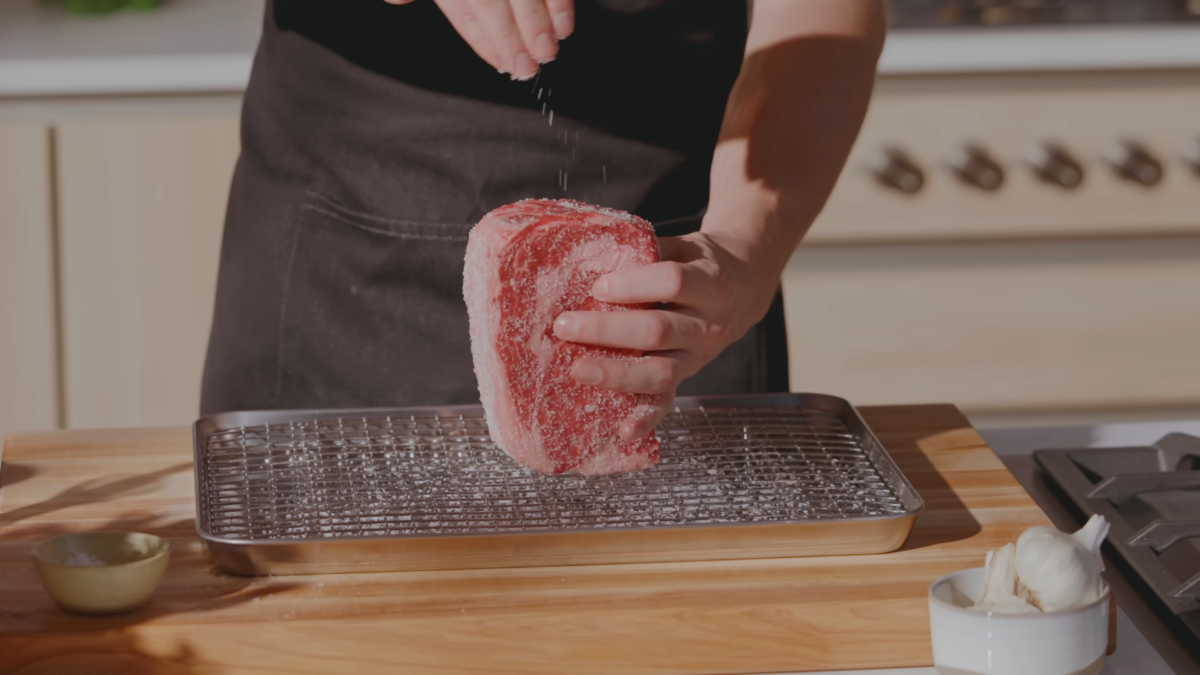
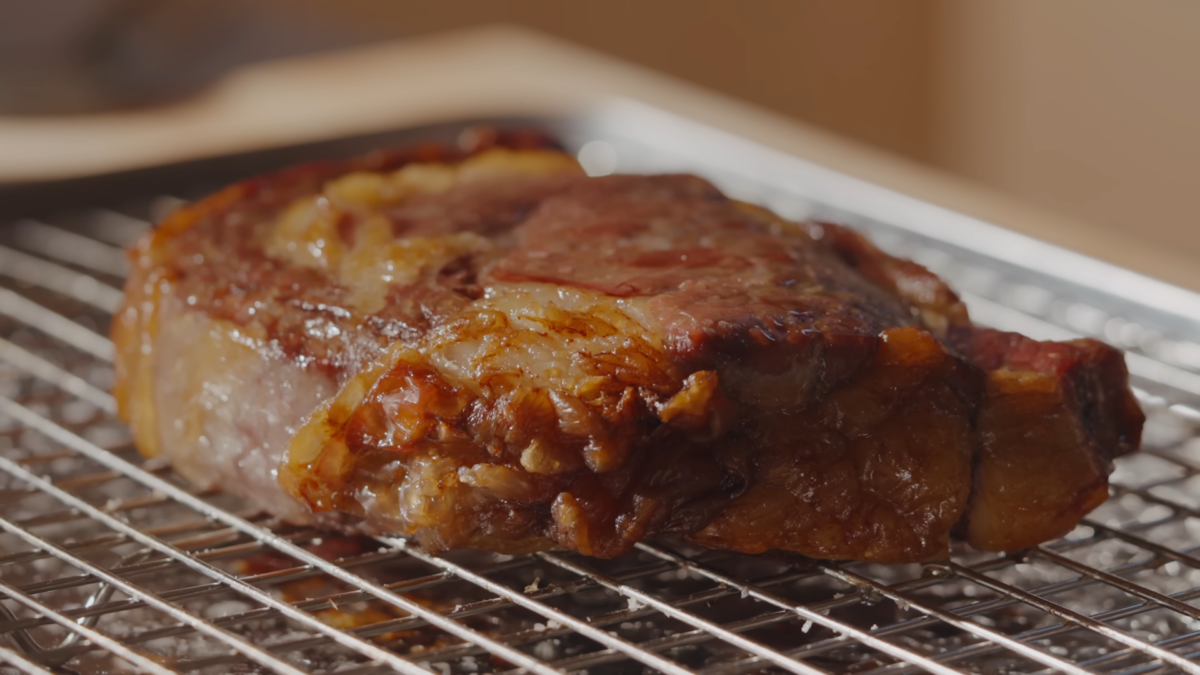
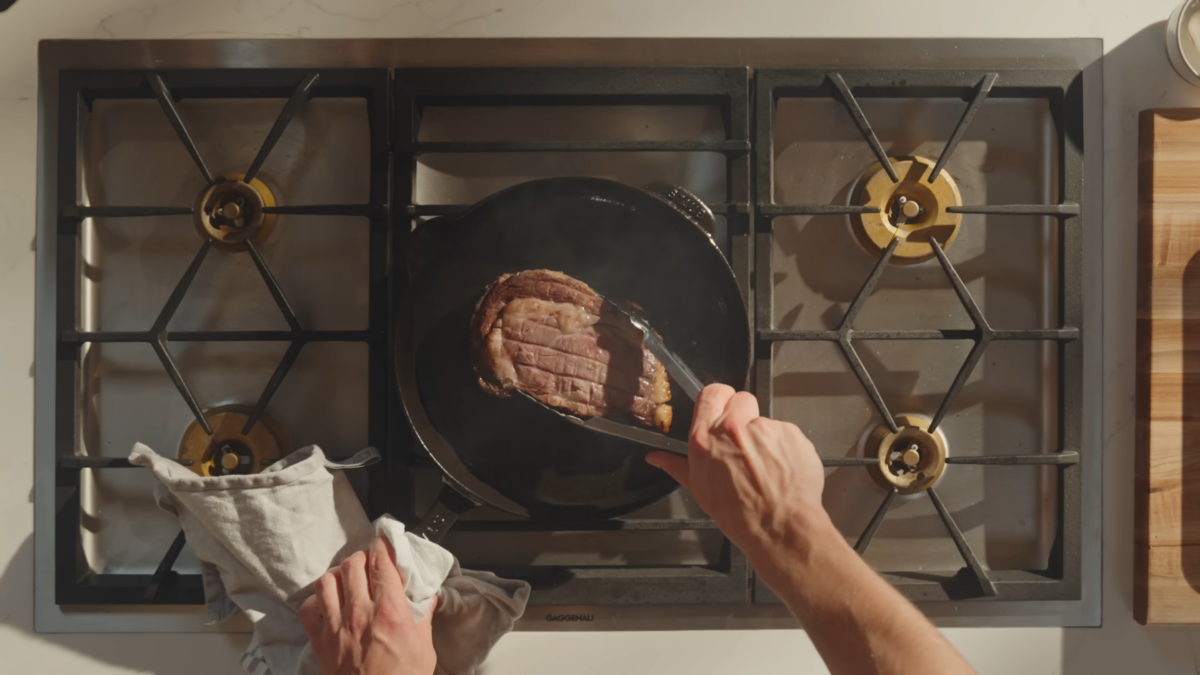
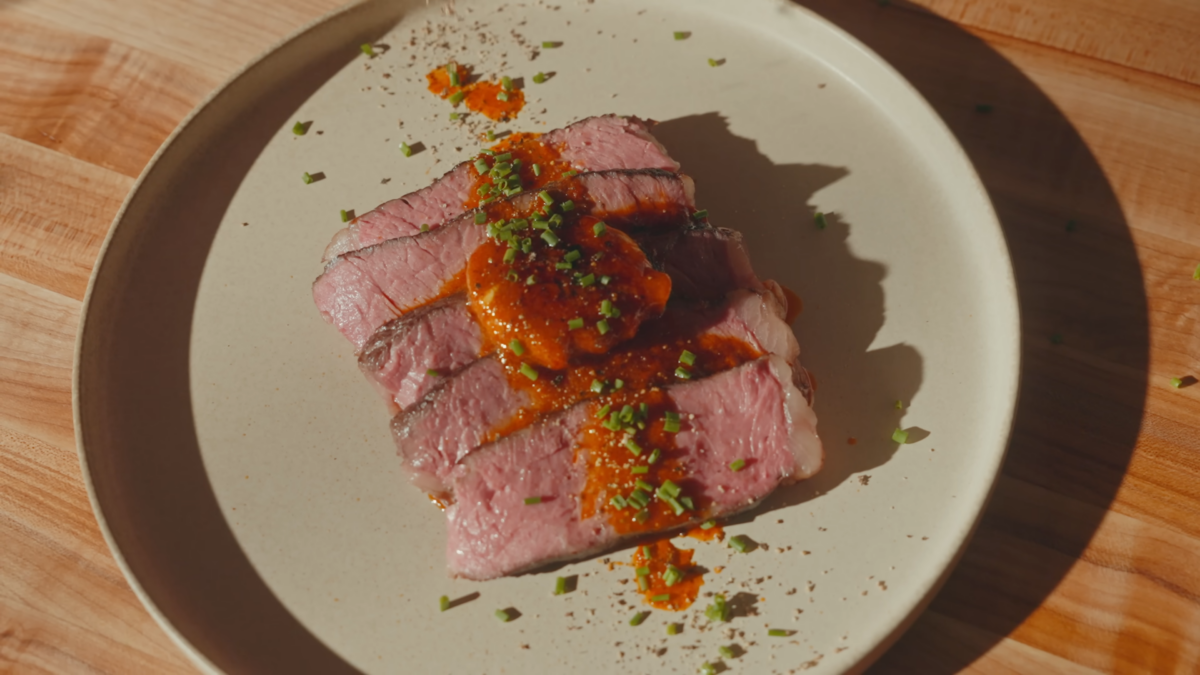

Internal Temperatures for Proper Doneness
The exact cooking time will vary depending on how you like your steak. Whatever doneness you prefer your steak, remember to remove it from the oven about seven to ten degrees before the desired internal temperature is achieved so that it can finish cooking on the stove.
Remember, your steak will continue to cook slightly as it rests. So, I recommend removing it from the heat on the lower end of your desired temperature.
| Doneness | Oven Temperature | Skillet Temperature |
| Rare | 85-90ºF (29-32ºC) | 115-120°F (46-49ºC) |
| Medium-Rare | 90-95ºF (32-35ºC) | 120-125°F (49-52ºC) |
| Medium | 100-105ºF (38-41ºC) | 130-135°F (54-57ºC) |
| Medium-Well | 110-115ºF (43-46ºC) | 140-145°F (60-63ºC) |
| Well-Done | 120-125ºF (49-52ºC) | 155°F (68ºC) |
Reverse Seared Steak Recipe
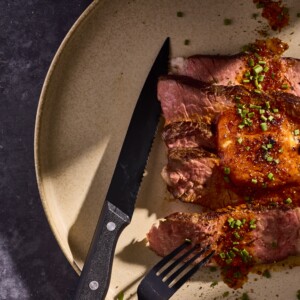
Equipment
- 1 Wire Rack
- 1 Sheet Tray
- 1 Probe Thermometer
- 1 (12-inch) Stainless Steel Skillet
Ingredients
- 1 (20 ounce) ribeye, at least 2 inches thick
- kosher salt to taste
- 1 tablespoon (13 gram) neutral oil
- ½ stick (57 gram) salted butter, cold
- 1 garlic head, sliced horizontally
- 2 large sprig rosemary
- 2 large sprig sage
- 6 sprig thyme
Instructions
- Place a wire rack on top of a sheet tray. Add the steak to the wire rack, and season liberally with salt on all sides. Place the seasoned steak in the refrigerator, and leave it uncovered overnight.1 ribeye, kosher salt to taste
- To cook, preheat the oven to 300°F (149°C). Insert a probe thermometer into the thickest part of the steak, and set the thermometer to 115°F (46°F).
- Transfer the steak to the oven, and cook for 35-50 minutes, depending on the thickness of the steak. Once the steak reaches an internal temperature of 115°F (46°C), remove it from the oven, and set aside.
- Preheat a 12-inch stainless steel skillet over medium-high heat. Brush the neutral oil all over the surface of the steak, and lightly season with salt.1 tablespoon neutral oil
- Add the steak to the hot skillet, followed by the butter, garlic (cut side down), rosemary, sage, and thyme.½ stick salted butter, 1 garlic head, 2 large sprig rosemary, 2 large sprig sage, 6 sprig thyme
- As the butter melts, tip the pan towards you, and continuously baste the steak with the butter. Sear the steak for one to two minutes, or until a deep crust begins to form.
- Flip the steak, and repeat the process. After one to two minutes, remove the steak from the heat, and transfer it to a cutting board.
- Rest for five to ten minutes. Then, slice the steak into ½ inch thick pieces, cutting against the grain.
- Transfer to a serving platter, top with a few slices of compound butter, and serve warm.
Video

Notes
Nutrition
Nutrition information is automatically calculated, so should only be used as an approximation.
 Like this recipe? Rate & comment below!
Like this recipe? Rate & comment below!Frequently Asked Questions
My favorite way to serve steak is with a slice of compound butter on top, with a side of mashed potatoes or a baked potato and green beans. However, it’s also great with sides like roasted vegetables, mac and cheese, fries, or a salad.
Reheat leftovers in a skillet with butter over medium heat just until warmed through.
Yes, to do so, create an indirect heating side of the grill. Once warm, cover, and cook your steaks on the cooler side until they reach an internal temperature between 100 and 125ºF (30 and 51ºC). Remove the steaks from the heat, cover, and increase the grill’s temperature to high. Sear your steak until char marks form on each side. Remove the meat from the grill, let it rest for ten minutes, and enjoy.

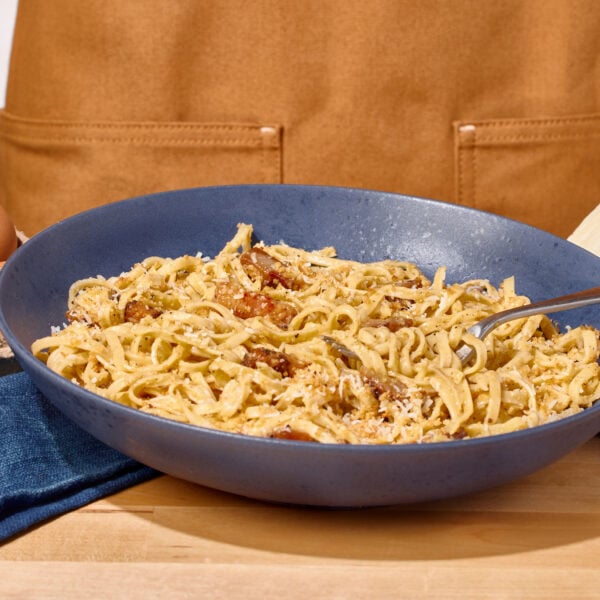


I like the simplicity, but you listed 3 different temps to get a medium steak. You said you do it at 122, then 115, then the chart says 100-105. Which is it?
The final temperature of the steak should be between 140-145°F (60-63ºC). Apologies for any confusion!
It’s great but as simple as you tried to be, I’m a REAL novice. I have the 2nd steak, thicker, bigger….I have no meat thermometer – just getting started so minus that testing,
HOW LONG do I leave it in the oven @ 300 degrees?? (for medium-medium rare?) The rest I believe I understand, thanks!
Love how I didn’t have to go through someone’s life story
Sorry to my cow
It was very nice know the recipe and it was very useful